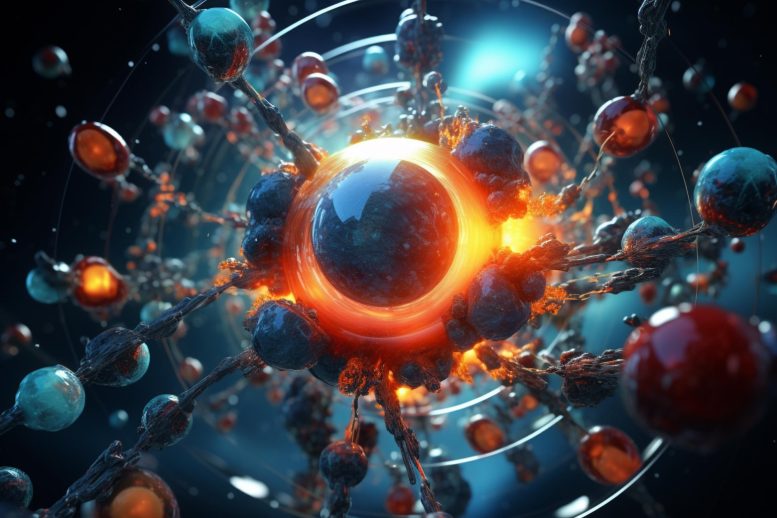
The University of Chicago has unveiled groundbreaking evidence for “quantum superchemistry,” where particles in the same quantum state act collectively. The findings could lead to advancements in quantum computing and offer deeper insights into fundamental laws of the universe.
Breakthrough could point way to fundamental insights and new technology.
A team from the University of Chicago has unveiled the first evidence for “quantum superchemistry” – a phenomenon where particles in the same quantum state collectively undergo accelerated reactions. While previously predicted, this effect had never been observed in the laboratory before.
The findings, published in Nature Physics on July 24, open the door to a new field. Scientists are intensely interested in what are known as “quantum-enhanced” chemical reactions, which could have applications in quantum chemistry, quantum computing, and other technologies, as well as in better understanding the laws of the universe.
“What we saw lined up with the theoretical predictions,” said Cheng Chin, a professor of physics and member of the James Franck Institute and Enrico Fermi Institute, whose lab conducted the research. “This has been a scientific goal for 20 years, so it’s a very exciting era.”
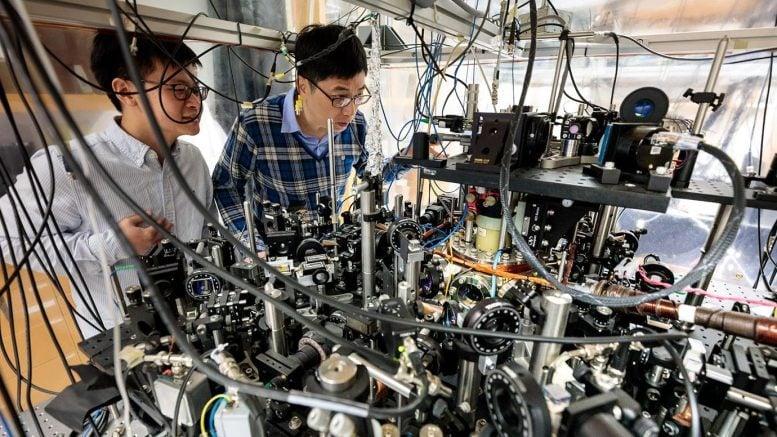
Scientists announced the first evidence for “quantum superchemistry” – a phenomenon where particles in the same quantum state undergo collective accelerated reactions. Above, study co-authors Zhendong Zhang (at left) and Prof. Cheng Chin in the laboratory. Credit: John Zich
Bose Enhancement: The Process
Chin’s lab specializes in working with particles held at very, very low temperatures. Near absolute zero, particles can link up so that they are all in the same quantum state—where they can display unusual abilities and behaviors.
It had been theorized that a group of atoms and molecules in the same quantum state would behave differently during chemical reactions, but the difficulty in orchestrating the experiment meant it had never been observed.
Chin’s group is experienced with herding atoms into quantum states, but molecules are larger and much more complex than atoms—so the group had to invent new techniques to wrangle them.
“How far we can push our understanding and our knowledge of quantum engineering, into more complicated molecules, is a major research direction in this scientific community.”
– Cheng Chin, a professor of physics
In the experiments, the scientists cooled down cesium atoms and coaxed them into the same quantum state. Next, they watched as the atoms reacted to form molecules.
In ordinary chemistry, the individual atoms would collide, and there’s a probability for each collision to form a molecule. However, quantum mechanics predicts that atoms in a quantum state perform actions collectively instead.
Implications and Consequences
“You are no longer treating a chemical reaction as a collision between independent particles, but as a collective process,” explained Chin. “All of them are reacting together, as a whole.”
One consequence is that the reaction happens faster than it would under ordinary conditions. In fact, the more atoms in the system, the faster the reaction happens.
Another consequence is that the final molecules share the same molecular state. Chin explained that the same molecules in different states can have different physical and chemical properties—but there are times when you want to create a batch of molecules in a specific state. In traditional chemistry, you’re rolling the dice. “But with this technique, you can steer the molecules into an identical state,” he said.
Shu Nagata, a graduate student and co-author on the paper, added that they saw evidence that the reaction was taking place as a three-body interaction more often than as a two-body interaction. That is, three atoms would collide; two would form a molecule, and the third remained single. But the third played some role in the reaction.
Technological Possibilities
This breakthrough signals the beginning of a new era. Although the experiment used simple two-atom molecules, there are plans to work with larger and more complex molecules.
“How far we can push our understanding and our knowledge of quantum engineering, into more complicated molecules, is a major research direction in this scientific community,” said Chin.
Some in the field have envisioned using molecules as qubits in quantum computers, or in quantum information processing, for example. Other scientists are exploring them as gateways to even more precise measurements of fundamental laws and interactions, such as testing basic laws of the universe like symmetry violation.
Reference: “Many-body chemical reactions in a quantum degenerate gas” by Zhendong Zhang, Shu Nagata, Kai-Xuan Yao and Cheng Chin, 24 July 2023, Nature Physics.
DOI: 10.1038/s41567-023-02139-8
Zhendong Zhang (PhD’22, now at Stanford University) and Kai-Xuan Yao (PhD’22, now at Citadel) were also co-authors on the paper.
Funding: National Science Foundation, Air Force Office of Scientific Research, Grainger Graduate Fellowship, Takenaka Scholarship Foundation.


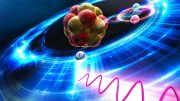
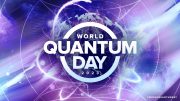



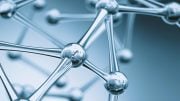
“Testing basic laws of the universe, like symmetry violation” is a ridiculous idea, and the result must be asymmetry. According to topological vortex gravitational field theory, symmetry is mainly manifested between topological vortices and their anti-vortices. It is difficult to find observable symmetry in high-dimensional spatiotemporal matter formed by topological vortices interactions.
As a scholar, have you ever asked yourself: Where does the power of the particles and celestial body spin come from? Will mathematics inspire you? Can topological vortices not spin? Is the spin of topological vortices related to gravitation?
Gravitation is the source of everything, any many-body dynamics that does not involve gravitation may be incomplete.
Word salad, fresh – 20 Yuan.
“Testing basic laws of the universe, like symmetry violation” is a ridiculous idea, and the result must be asymmetry. According to topological vortex gravitational field theory, symmetry is mainly manifested between topological vortices and their anti-vortices. It is difficult to find observable symmetry in high-dimensional spatiotemporal matter formed by topological vortices interactions.
As a scholar, have you ever asked yourself: Where does the power of the particles and celestial body spin come from? Will mathematics inspire you? Can topological vortices not spin? Is the spin of topological vortices related to gravitation?
Gravitation is the source of everything, any many-body dynamics that does not involve gravitation may be incomplete.
Schizophrenia can be treated… even in China
The so-called scientific community you represent is best at nothing more than personal attacks.
The only applications I can imagine would be in rocket engines.
That says more about your limitations than anything else.
Qing Wen: Can Quantum Ultrachemistries lead the way to developing replication technologies ??